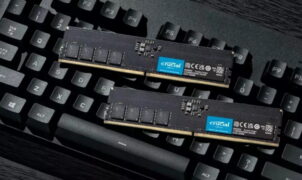Microsoft‘s general manager of cloud gaming is quite optimistic.
Although last year, we saw Nvidia’s GeForce Now and Amazon’s Luna start or leave beta, recently, cloud gaming got a gut punch, as Google is no longer making games internally, shutting down Stadia Games & Entertainment. Yet, Microsoft concentrates a bit more on it, as the xCloud is part of the Xbox Game Pass Ultimate subscription to have more reach, using the Azure data servers and the PlayFab technology (the latter was acquired by Microsoft about three years ago).
„We have several “industry priority scenarios.” It doesn’t roll off the tongue, but they’re things that we think the industry cares about today that may be pain points that we’re trying to help with. The first one on our list of five is to accelerate game production with the cloud. With this act of content creation, once you have it in the cloud, distribution becomes more fluid. We see this with xCloud. It started as just racking Xboxes in datacenters and streaming it. Now we’re getting more experience with it, and you may be able to build game experiences that would not be possible without running in the cloud. Games were you can have lots of players in a single environment interacting in new ways.
xCloud was about putting Xboxes in the cloud *laugh* but the broader term is pixel streaming, where you’re running GPUs in the cloud and streaming it down. Initially, pixel streaming is going to be useful in non-gaming scenarios like architecture or retail where you want a 3D experience but you don’t have to have the hardware. That will then move into gaming and you’ll see developers leveraging experiences that go beyond what was possible before,” James Gwertzman, the general manager of Microsoft’s cloud gaming (who formerly was the co-founder and CEO of PlayFab), told GameRant in an interview.
He then mentioned the voice-font technology, which could provide interesting solutions in voice acting: „[…] we have voice-font technology where we can record and listen to a couple of dozen hours of someone talking, and then build a model that can recreate that person’s voice saying whatever we want them to say. When you think about that in the context of deep fakes it’s deeply troubling, but when you think about its use in casting voices for games, it could allow an indie developer with a small budget to create thousands of hours of dialogue. Even better, have the computer speak using AI in whatever voice you want, you can get some cool creative experiences. I love the idea of using voice fonts to let the computer speak in a more natural way than you typically get today. There are neat opportunities like that coming,” Gwertzman added.
These are all future technology for now, though.
Source: WCCFTech
















Leave a Reply